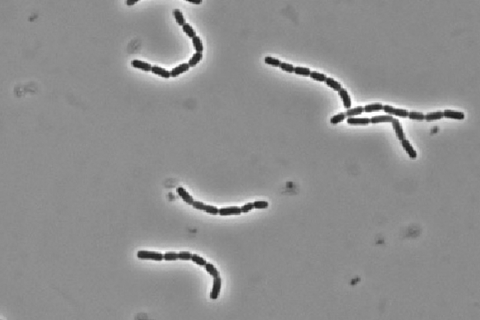Iron-deficiency anemia is a common condition marked by tiredness, headaches or ice cravings. But the oral iron supplements used to treat it can leave behind excess iron that causes inflammation and an upset stomach.

A new supplement reported in ACS Applied Materials & Interfaces combines iron, prebiotics and probiotics. In trials, the treatment successfully restored blood iron levels in anemic mice without initiating an inflammatory response or throwing off the balance of the gut microbiota.
READ MORE: Probiotic combo stops bacteria that cause toxic shock syndrome
READ MORE: Two probiotics identified as promising hypertension treatments
“By advancing biomaterial-based iron delivery, this research offers a transformative approach to address anemia, directly contributing to improved nutrition and long-term public health,” explains Poonam Sagar, an author of the study.
Anemia occurs when there aren’t enough red blood cells available to shuttle oxygen around the body. It can be caused by infections, genetic factors or nutritional deficiencies — namely, a lack of iron in one’s diet. To treat iron-deficiency anemia, clinicians typically prescribe oral iron supplements. However, very little of the iron within the tablets is absorbed into the body. And any leftover iron can cause an imbalance in the gut microbiome, resulting in irritation and/or inflammation in the gut. As a result, iron supplements are sometimes co-prescribed with probiotics to help beneficial bacteria proliferate.
Three-part supplement
Scientists have previously combined iron supplements with probiotics into a single treatment option. Now, Sagar, Nitin Kumar Singhal and colleagues took this approach a step further by adding in prebiotics — essentially, food for the probiotic bacteria — to create a three-part iron supplement that could be more effective than existing options.
The researchers combined dietary fiber from millet (a type of grain), probiotic Lactobacillus rhamnosus bacteria, and an iron-containing complex to form the supplement. In tests, they determined the three-part treatment’s biocompatibility in human cell cultures and demonstrated its effectiveness in mice with iron-deficiency anemia. After two weeks, mice fed the supplement showed:
- Restored hemoglobin levels (the primary iron-containing molecule in red blood cells).
- Excretion of iron amounts similar to those of a control group of non-anemic mice, showing successful iron uptake by the body.
- Upregulation of genes associated with iron transport via red blood cells indicated that iron metabolism was restored.
- A minimal inflammatory response in the colon.
- Restored populations of beneficial gut bacteria compared to those of the anemic mice.
Though further studies are needed, the researchers say that this initial work provides a more effective iron supplement treatment option that can minimize side effects and promote public health.
The authors acknowledge funding from the Ministry of Science and Technology of India and the National Agri-Food Biotechnology Institute.







No comments yet